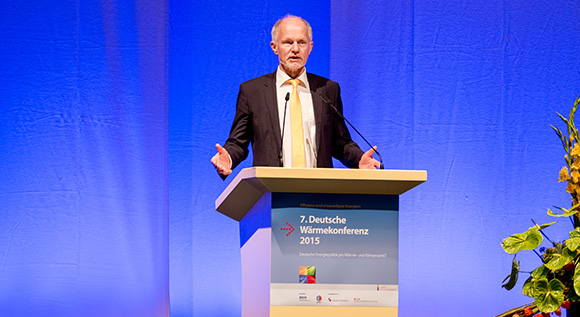A home-made energy transition in the heating sector
There is a great deal of potential to save energy in Germany’s buildings. State Secretary Rainer Baake explained how to tap this potential at the 7th German Heating Conference in Berlin.
 © BDH Federation of German Heating Industry
© BDH Federation of German Heating Industry
Anyone reflecting on energy efficiency has to include heating and buildings in their thoughts. Both fields offer massive potential to help Germany reach its efficiency targets. State Secretary Rainer Baake explained how to tap this potential to some 200 representatives from government, business, science and the media at the 7th German Heating Conference in Berlin.
Climate-neutral buildings by 2050
The German government wants to cut carbon emissions by nearly 20 million tonnes by 2020. More than a quarter of this - 5.5 million tonnes - is to derive from energy efficiency. The building stock offers particularly great potential savings: by 2050, it is to consume approx. 80 per cent less fossil energy than in 2008. For this reason, people have started talking about the “heat transition” with regard to energy-saving heating. Also, the building stock is to be virtually climate-neutral by 2050 - i.e. it should not release any carbon at all if possible.
Why buildings?
Why are buildings so important for energy efficiency? There are various reasons: buildings consume nearly 40 per cent of total final energy in Germany. The energy performance of many of the 19 million or more residential buildings here has only been partially improved - if at all - and the same goes for the more than three million non-residential buildings. Maintenance work will need to be done sooner or later for very many of them. In fact, over the next 20 years, roughly half of all buildings in Germany will need to be modernised. So why not improve the energy performance at the same time? After all, optimised heating systems and new heat pumps could cut carbon emissions by about 2.5 million tonnes by 2020.

